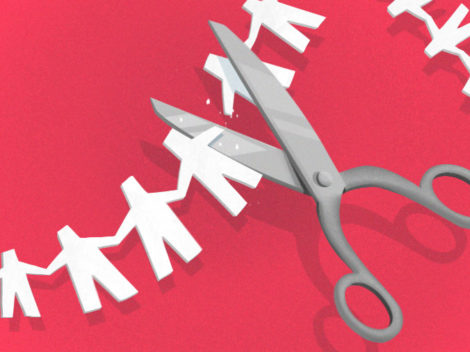Shares of Snap, parent company of the popular messaging service Snapchat, fell sharply today after the startup reported third-quarter earnings.
Understanding why Snap’s shares fell is critical for startups eyeing the public markets. After all, once a firm goes public, it must endure regular repricing of its shares, something that many are loathe to accept.
Snap’s shares collapsed for a number of reasons, each material. First, it missed on revenue growth. Second, its user growth came in under expectations. Third, the firm came in light on per-user revenue. And fourth, Snap sharply wrote down hardware inventory.
We’ll examine the concerns in order.
Revenue
Snap reported $207.9 million in revenue during the period, up sharply from the year-ago quarter in which the firm brought in top line of $128.2 million.
However, analysts had expected Snap to report revenue of $236.9 million. That means that Snap’s growth fell far short, leaving a yawning gap between what the company was actually able to bring in and what investors had expected.
Snap was unprofitable at the time of its IPO. Indeed, the company had a history of gross-margin negative quarters according to its S-1, though the firm had managed to claw its way to gross margin positivity by the time it filed to go public. Given its history of unprofitability, it’s easy to understand that investors in Snap at the time of its IPO, and in the following months, did not buy its shares in hopes that the company would generate profit in the short-term.
Instead, they bought revenue growth. And Snap failed to deliver on those expectations.
The lesson for startups: If you are valued on growth, public market investors are cutting slim margins for revenue misses.
Users
Snap reported that its daily active user (DAU) count grew from 153 million in the year-ago quarter to 178 million in the most recent quarter. That figure was up 17 percent year-over-year, and up 3 percent from the sequentially preceding quarter.
User count growth was also hugely below expectations. According to CNBC, the anticipated figure was 181.8 million DAUs.
User growth is a somewhat-workable proxy for future revenue growth: If a company can expand its user base, investors can expect higher future incomes driven by that larger cohort of active platform participants. This is doubly true of the company is boosting its per-user revenue over time.
In reverse, if a revenue-growth-valued firm misses user growth expectations, it can throw analyst projections into chaos. Therefore by missing on revenue and user growth, Snap managed to disappoint on a trailing and forward basis.
The lesson for startups: If you get to pick the user-metric that investors use to vet the health of your business, you can’t miss on that metric.
Per-User Revenue
In the quarter, Snap grew its average revenue per user (ARPU) to $1.17 from $0.64 in the year-ago period. The new figure also compared favorably to the preceding quarter’s $1.05. However, investors had expected Snap to push that number up to $1.30, according to CNBC.
Missing on per-user revenue could raise concerns that Snap won’t be able to drive monetization as quickly as some analysts expected. If that is the case, its future user growth may be worth less than some expected. Add that to underperforming user growth and Snap’s future top line may appear smaller than before.
The lesson for startups: You might be able to get away with a revenue miss due to slow user growth, but if you miss on revenue, user growth, and per-user revenue you are have managed an anti-hat trick.
The Surface RT
Snap took an expensive, $39.9 million expense in the quarter relating to its remaining Spectacles inventory. That Snap made far, far too many pairs of the electronic-glasses was known for some time. That the firm would have to let go of nearly $40 million over the mistake perhaps wasn’t.
Naturally, Snap’s hardware story isn’t finished, and it isn’t the first digital media company to lose money pursuing a physical product. But for Snap, a company that is short of revenue growth, the Spectacles spectacle isn’t encouraging.
The lesson for startups: Huge, expensive, embarrassing hardware fuckups are best fit for companies that can absorb the loss. Take Microsoft’s Surface RT, for example. Or Microsoft’s Nokia purchase. Or Microsoft’s Danger purchase, to cite another example. The list goes on, but let’s bring up Google’s Motorola deal here as well for good measure.
Hard Tacks
Back to the core numbers, Snap lost $443.2 million in the quarter on a GAAP basis, up from $124.2 million in the year-ago quarter. The firm’s adjusted EBIDTA grew from negative $108.6 million a year ago to $178.9 million in the most-recent quarter.
To date this year, Snap has lost over $3 billion on a GAAP basis, a staggering sum of money. It retains around $2.3 billion in cash and short-term investments that can be treated as cash.
In the first three quarters of this year, Snap’s operating activities burned $558.6 million. Even at its current pace, Snap isn’t in danger of running out of cash for a minute.
Shares of Snap fell over 20 percent in after-hours trading before recovering slightly.

Stay up to date with recent funding rounds, acquisitions, and more with the Crunchbase Daily.



![Illustration of pandemic pet pampering. [Dom Guzman]](https://news.crunchbase.com/wp-content/uploads/2021/03/Pets-2-470x352.jpg)

![Oct Calendar page being torn off to make way for Nov. [Dom Guman]](https://news.crunchbase.com/wp-content/uploads/oct-nov-470x352.jpg)
![Illustration of a guy watering plants with a blocked hose - Global [Dom Guzman]](https://news.crunchbase.com/wp-content/uploads/quarterly-global-3-300x168.jpg)
67.1K Followers